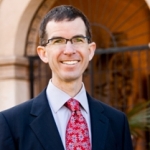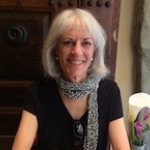march 2015 blog salon
march 2015 blog salon
The SIMPHONY Project: How Does Music Change a Child’s Brain?
march 2015 blog salon
Five Reasons Not to Forget Special Education Students

Stephen Marc Beaudoin
They’re often left behind.
Left out of the discussion. Forgotten. Not on the stage or missing from the page. Frequently not even in the room.
I’m talking about students experiencing disability, or special education students.
march 2015 blog salon
Brains Under Construction: Supporting Students in the Arts
march 2015 blog salon
Why English Language Learners need the arts

Rebecca Burrell
march 2015 blog salon
Art is History of People

Anna Huntington
Confession #1: I had to Google “cognitive development” before I started writing this. I’m an arts administrator, after all, not an educator.
march 2015 blog salon
Permission to Play: How the Intergenerational Arts Space (Re)teaches Creative Play to Young and Old

Jennifer Kulik
march 2015 blog salon
Arts and Cultivating Imagination
march 2015 blog salon
Arts Education and Cognition: A Caution and a Path Forward
march 2015 blog salon
All Writing Is Creative Writing

BJ Buckley
march 2015 blog salon
New Reasons to Teach and Learn Through the Arts

Mariale Hardiman
march 2015 blog salon
Arts Education and Cognitive Development: Compiling the Research

Jeff Poulin
march 2015 blog salon
Dance as an Escape

Mary Palmer
Arts Education and Cognitive Development
Posted by Mar 20, 2015

Mary Palmer
I have launched my own version of a television show… for an audience of one. Henry, my first grandchild, has been my avid collaborator for over 2 years. Although we are separated by thousands of miles, we are “close” thanks to frequent video conferencing. Tours of my house and yard, co-reading books, playing with puppets, singing songs, playing instruments, counting oranges or abacus beads, and just chatting are part of our “together time.” The huge difference between my TV show and “prime time” TV is that mine is tailored to the interests and needs of Henry. He has an integral role in the choice of content as well as the pacing and types of interaction in which we engage.
Read More
Dalouge Smith

Dr. John Iversen
The SIMPHONY Project: How Does Music Change a Child's Brain?
Posted by Mar 20, 2015

Dalouge Smith

Dr. John Iversen
Music is a central part of life for many of us, whether we listen, dance or play. It makes us feel good, or transports our imagination, but what is going on in our brain? Can music be used to help an ailing brain, or boost a learning one? An emerging field of Music Cognition is studying these important questions using new tools such as brain imaging that allow us to examine how the brain is changed by music. In this post we would like to tell you about one study we are doing that is trying to answer some of these questions.
In a collaboration between the University of California, San Diego, and the San Diego Youth Symphony and Conservatory, we have started the SIMPHONY project to ask the important question: "How does music change a child's brain?"
Read More
Stephen Marc Beaudoin
Five Reasons Not to Forget Special Education Students
Posted by Mar 19, 2015

Stephen Marc Beaudoin
They’re often left behind.
Left out of the discussion. Forgotten. Not on the stage or missing from the page. Frequently not even in the room.
I’m talking about students experiencing disability, or special education students.
In the swirling national dialogue on arts education and cognitive development, it is surprising to see how infrequently students experiencing disability are included as part of the research and discussion.
Read More
Rebecca Burrell
Why English Language Learners need the arts
Posted by Mar 19, 2015

Rebecca Burrell
When you take a look at the numbers, it’s clear that in coming years our public schools will enroll more English Language Learners than ever before. According to research by the Pew Charitable Trust, by 2050 34% of children under age 17 in the United States will be either immigrants or children of immigrants.
We also know that public school teachers are by and large white—over 80% as of the 2011-12 school year—leaving vast cultural and language gaps between teachers and their students. (Read more about that on page 20 of this report.)
Read More
Jennifer Kulik
Permission to Play: How the Intergenerational Arts Space (Re)teaches Creative Play to Young and Old
Posted by Mar 18, 2015

Jennifer Kulik
I grew up in Des Moines, Iowa, in a neighborhood with lots of people my age. When the weather was nice, the neighborhood kids and I would play outside, inventing new games, creating special spaces in trees, and learning how to negotiate our wants and needs with those of others.
Play is an important part of learning and thinking. It helps us make sense of the world, experiment, and negotiate within it. Play:
Read More
Anna Huntington
Art is History of People
Posted by Mar 18, 2015

Anna Huntington
Confession #1: I had to Google “cognitive development” before I started writing this. I’m an arts administrator, after all, not an educator.
Confession #2: From my perspective, it seems clear that art makes kids smart. To the body of research demonstrating art education’s score-boosting, transferrable-skills, and college-readiness cognitive development superpowers, I say, “Yup.”
Confession #3. I live in Rapid City, South Dakota (not far from Mount Rushmore). Our community, which encompasses nearby Pine Ridge Indian Reservation, has long, deep, painful struggles with racism.
Read More
Rachael Carnes
Dance as an Escape
Posted by Mar 18, 2015

Rachael Carnes
Juggling. We’re all juggling, aren’t we? Racing from work to activities to home to work, in a never-ending loop. But what if the balls we were trying to keep in the air carried more weight? What if dropping one of them meant something really bad might happen to us, something difficult, something damaging? What if we’re born juggling – “risk factors” is the term we’ve coined. What if these risk factors load us up, right from the get-go, with punishing amounts of instability? What if there’s a shortage of food in our home? Or heat? What if one or more of our parents have a disability, or a drinking problem, or issues with drugs? What if our parents are embroiled in a relationship that includes abuse, of mom, of dad, of… me?
Read More
Peter Duffy
Arts Education and Cognition: A Caution and a Path Forward
Posted by Mar 17, 2015

Peter Duffy
When I talk with teachers around the country about arts education and cognition they all ask the same question, “What research can I show my principal to prove the benefit of arts education?” It is as if teachers seek a holy grail that will prove once and for all its significant value. Teachers want to verify art education’s impact to prevent its relegation to a merely fun or acculturating activity within schools. Their question is an important and, of course, complicated one.
Read More
Evan Sanderson
Arts and Cultivating Imagination
Posted by Mar 18, 2015

Evan Sanderson
My first role was as a knight. I was eight. The audience consisted of my friend, Steven, also playing a knight, and the various woodland creatures that inhabited the backyard of our house in suburban Maryland. You see, I had recently been to the Maryland Renaissance Festival, and like many young boys and girls my age, had fallen in love with the costumes, the swords, the accents, and the meat on a stick. And so, back at the castle (my house), I was determined to recreate the excitement, the vivacity, and the magic of the experience … if only in my head.
Read More
BJ Buckley
All Writing Is Creative Writing
Posted by Mar 17, 2015

BJ Buckley
What is thinking? Are there different modes of thought? How do we learn? Why do we respond so powerfully and intensely to the world’s beauty and to the beauty of things made by humans in response, to art in all its forms? What are the connections between our responses to paintings, music, dance, theater, poetry, and stories, our own impulses to make and create, and learning?
Read More
Mariale Hardiman
New Reasons to Teach and Learn Through the Arts
Posted by Mar 16, 2015

Mariale Hardiman
Do you still sing the alphabet when you need to recall the order of letters? Do you chant the poem “Thirty Days Hath September…” when trying to remember how many days there are in a month? Now think about your time in school. My guess is that, like me, you remember school plays, a catchy song when you studied a foreign language, or the content of a science or history lesson when you made a poster or diorama. Yet, how many of us remember the content of the tests or quizzes we took in school?
Most of us have had some experiences that support the idea that using art helps us to remember information better. We would also likely agree that as we progressed through our schooling, learning with and through the arts seemed to diminish, replaced with more traditional types of learning such as lectures and text-based inputs and outputs.
Read More
Mr. Jeff M. Poulin
Arts Education and Cognitive Development: Compiling the Research
Posted by Mar 16, 2015

Mr. Jeff M. Poulin
More and more, we at Americans for the Arts are talking about the transformative power of the arts, echoing the work that has happened at a local level in the arts across America for the past several decades. However, as I move more and more into the education space, I hear a call for the hard facts amongst the heart-warming stories. Education decision makers want to see results, they want to see change, and they want to draw a correlation between the two.
As a professional arts education advocate, I can keep up with most of these requests, but recently I found myself at a bit of a cross roads. I was in Los Angeles, speaking with a self-described ‘music education evangelist,’ who was telling me all about some research that had been conducted on the impact of arts education on the cognitive functions of the brain. Arts Education, he said, could work to close the opportunity gap faster than other – more conventional – tactics.
Read More
Barbara Weidlein
Brains Under Construction: Supporting Students in the Arts
Posted by Mar 19, 2015

Barbara Weidlein
The more I learn from the ongoing research on adolescent cognitive development, the more I realize the degree to which high school students are expected to make major decisions for which their brains are not quite ready. It’s no wonder that the college decision process, as well as the consideration of careers, is so overwhelming for many if not most 17- and 18-year-olds. I remember my son at that age: he couldn’t imagine going into any field other than music. Yet the plethora of choices and decisions without clear guidelines to facilitate the process proved to be highly confusing and enormously time-consuming for him. In fact, it became the inspiration for the creation of MajoringInMusic.com, in an effort to ease some of that angst for other students - and their parents.
Read More










